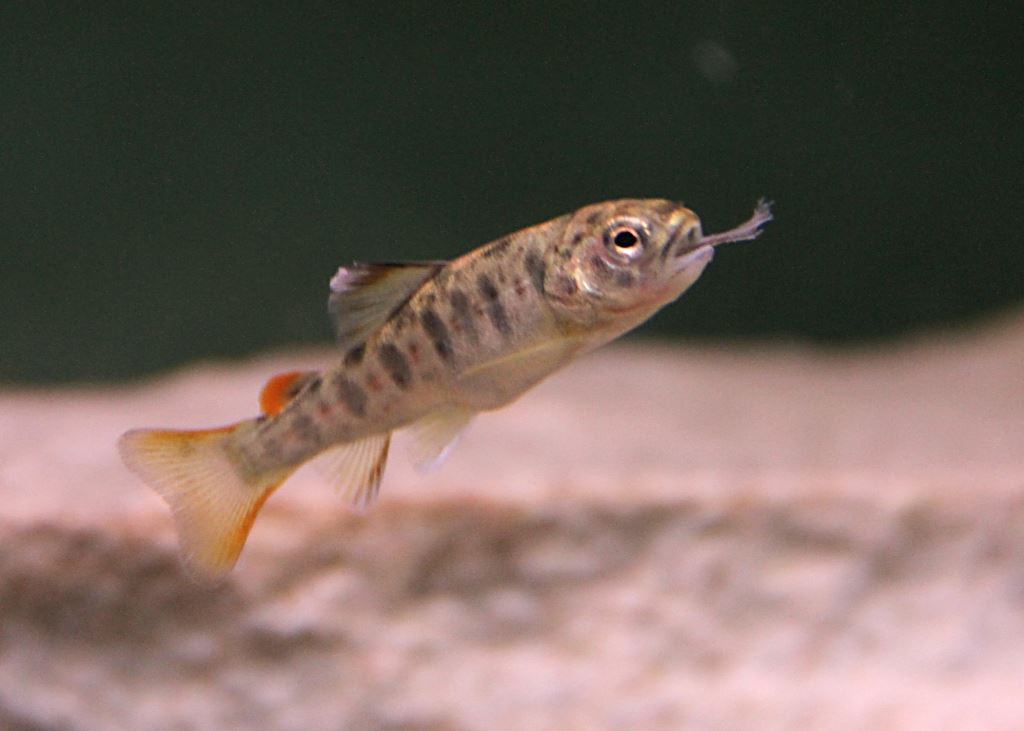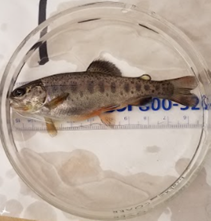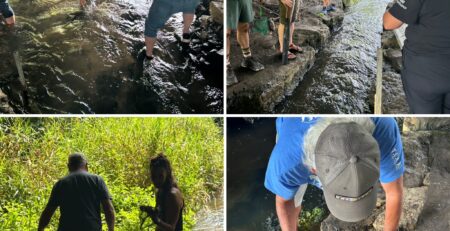How are the Trout growing?

The thousands of tiny, neon orange eggs students welcomed in December have now gone through two additional life cycle stages: alevin and swim up fry. As alevin, the trout are not yet eating regular food or swimming. Instead, they flop around on their sides in the egg basket, piling up together in the corners, gradually absorbing their yolk sac to prepare for their first swim up.
As swim up fry, trout head to the surface for the first time to get a gulp of air to fill their swim bladders, but are not yet actively searching for food as they still have yolk sac to absorb for nutrition. Once over 75% of the fish are actively swimming, teachers and students begin feeding them the specially formulated hatchery food we receive from the Lanesboro hatchery fisheries staff. Moving forward, the trout’s growth is regulated by the temperature of the tank in addition to how much food they receive.
Fish in warmer tanks grow faster and also have higher metabolisms, requiring more food. In colder tanks, their growth rate is slowed down along with metabolism, requiring less food. By now, most tanks have trout that are at least 1.5-2 inches long, depending on the temperature at which teachers are keeping the tank. This graduates them from the swim up fry stage to the fingerling stage. Trout technicians will continue to monitor them closely, maintain the tank, and record data until their release this spring!
There are three important conversations about the MNTIC program that I ask all participating teachers to have with their students, school staff, families, etc. as needed throughout the school year:
- TIC tanks are replicating nature. In the wild, a female trout will lay 500-2,000 eggs depending on her size. Only about 5% of fertilized eggs make it to the end of their first year due to predators, water toxins, habitat changes, etc. It is normal and to be expected that fish will die during all stages of development, even in the most well-run tanks.
- Fish might eat each other! Cannibalism can and does happen in our tanks the same as it would in nature. There are ways to help prevent this that we will learn about during training, but be prepared to see a tail sticking out of a tank mate’s mouth at some point during the fingerling stage.
- The trout in our tanks are being raised and released as part of an education program with permission from the MN-DNR. We are not stocking fish as part of any MN-DNR project or to maintain population levels in the bodies of water where they are released. We have special permits that allow us to do this program and legally release the trout.



